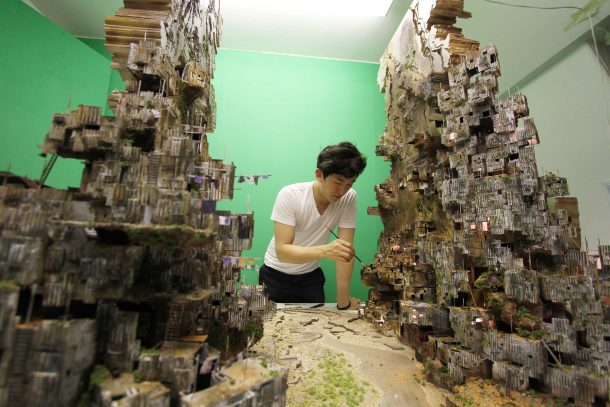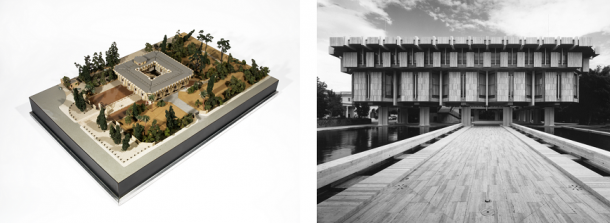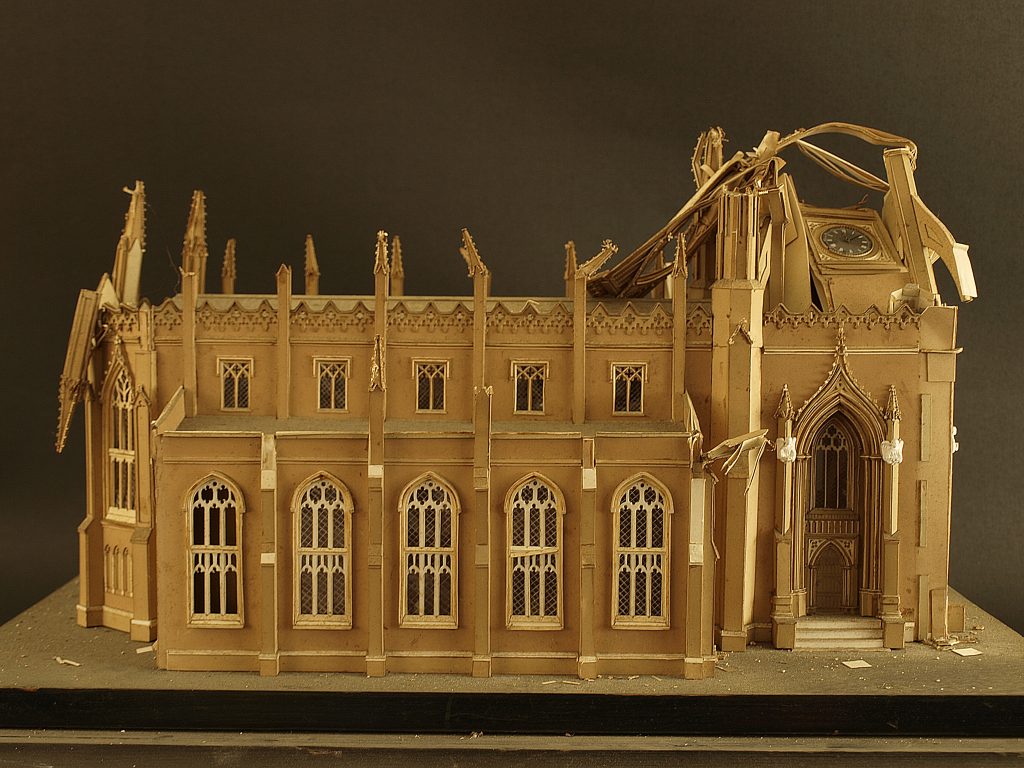Preserving
Conservation teams are responsible for the preventive and remedial treatments and scientific investigation of objects. This is achieved through expert knowledge of the science of materials and practical expertise in conservation. An architectural model may need to be conserved for several different reasons, such as poor environmental conditions in storage, mishandling or neglect, or due to inferior material components applied in production. Remedial conservation is undertaken to improve the condition of the collections, ensuring their long-term stability. Through scientific analysis and knowledge of production and conservation procedures, the conservator can interpret object deterioration and apply suitable treatments.
Storing
Unless on permanent display, many models will remain in storage for most of their lifetime. There are many complex obstacles to overcome in terms of the storage or architectural models such as the model size, weight, material make up, fragility to movement, mechanical aspects and susceptibility to environmental fluctuations. The quality of storage is the most important factor in safeguarding the lifespan of a collection. Collection objects should also be monitored, and planned storage improvements implemented to ensure that a long-term preservation strategy is met. Guidance should be sought within these subject areas prior to selection of a storage facility:
- Location: external and internal
- Construction and building specifications, materials
- Risk assessment and hazard identifications
- Security and access
- Environmental stability and sustainability
- Pest infestation and monitoring
- Fire prevention and protection
- Water ingress prevention
- Lighting



